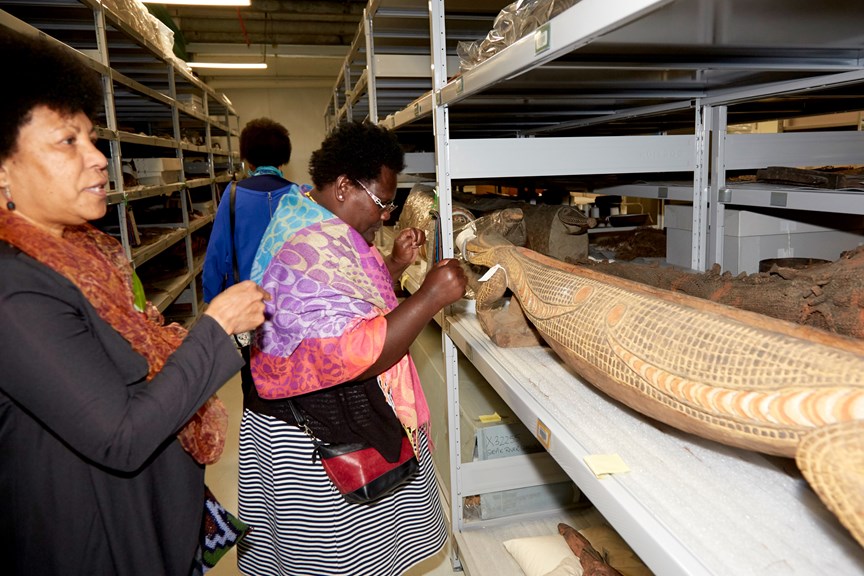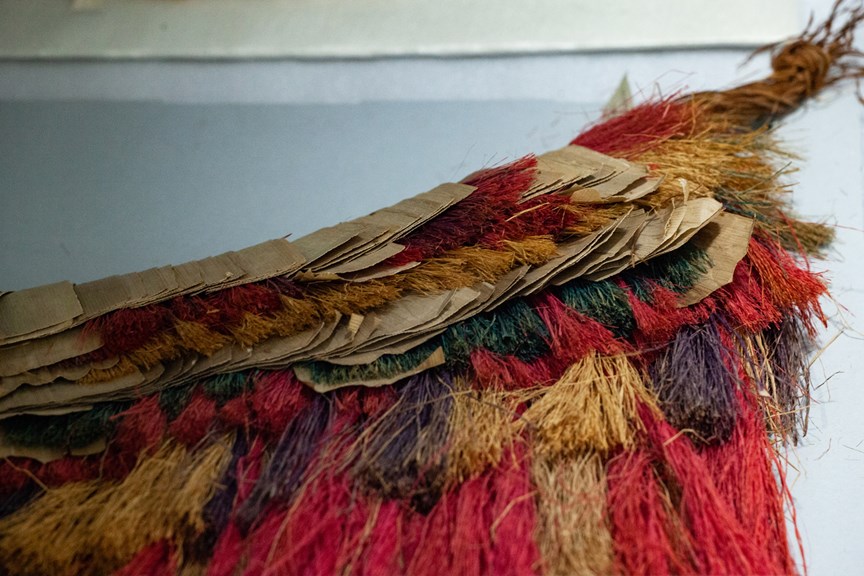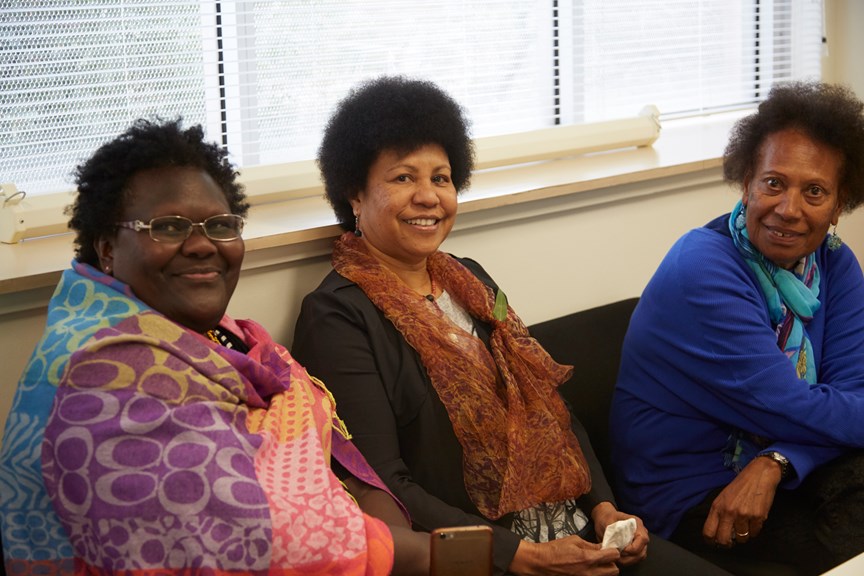Aunty Elvie Rowe
Aunty Elvie Rowe recalls seeing the collections for the first time.
Aunty Elvie: When I first walked into the room where the Melanesian collection and walking in I felt a sense of aura. I was so happy to be walking into this amazing feeling of oh, you know, this is my people. They’ve been waiting, they’ve been waiting for me to arrive. Before I went in to go down to all the you know collection where they were stored, my relatives, my ancestors, came and greeted me at the door. That’s exactly how I felt. It was a sense of belonging, sense of pull, saying ‘Come we are here, at long last you’ve come!’
The Papua New Guinea, and especially the Milne Bay section, where I come from, my province, I had the hairs on the back of my neck and the back of my arms stand up. And I turned around, and I looked down and I noticed that there were these grass skirts that I recognised, that I know that came from my province. I was so overcome by emotion, and it was almost as if the people were there, the people who, the hands that made those artefacts were there. And those who wore those artefacts—grass skirts, spears, mats—the hands that made those, generations and generations ago. Just, it was just awesome, and I was in floods of tears as well as happy and sad at the same time… yeah. And as I speak about it now, I get very emotional, because it’s strong, those are our heritage.
There are certain grass skirts that are for dances, and certain grass skirts that are made for working or everyday living. And a lot of the artefacts that I’ve seen in there are things that are put away and they’re only brought out on very special occasions. So a lot of those things…. and we, we are not allowed to touch them, you know a lot of the, the…. especially to do with dancing, headdresses, and grass skirts and necklaces, and things like that, they belong to each and every person who is in the dance group. And a lot of those people are chosen; only certain people are allowed. And each and every one in that group, looks after their own gear, artefacts, and they hide them away and only bring them out at certain times. And there are also rituals that go in with those. I have to have respect and not touch it.
Ahhh, the sadness was from the fact that they were locked, they’d been taken away from their home provinces, from Papua New Guinea, Melanesians, the Pacific, a lot of the artefacts were taken away. And I felt sad about that. That they were taken away. But at the same time, I was also happy because they’d been preserved. Everything evolves, right, and a lot of those old artefacts are probably not there anymore in Papua New Guinea because a lot of the artefacts were made from wood, from grass, from palm trees, which over time can deteriorate. They become brittle and they break. But by the way they’ve kept them is also preserving them, which means that the custom and culture will continue on for a long long time because they’ve been looked after. But at the same time it will be good for them to be brought out in the open, so that people can see it. And the next generations will be able to look at them and learn from those artefacts.
The creators would be so happy to have their ancestors come and look at them. But it’s connecting. And for the young Pacific Islanders and Papua New Guineans living down here, for them to come in and see it, it’s a connection, so they say ‘Oh, those are ours, that’s where I’ve come from.’ That this is our custom and our culture, and we’re proud of it. So if you bring the community in, and it has to be ongoing, because the community has stories and it keeps it alive. It keeps the custom and the culture, and it keeps those artefacts alive so that they’re just objects placed aside and forgotten which is what happened in the past. For those artefacts to be put in vaults, and said ‘oh, they are not that important,’ of course they're important, we are important. Those artefacts are us. They're who we are!


